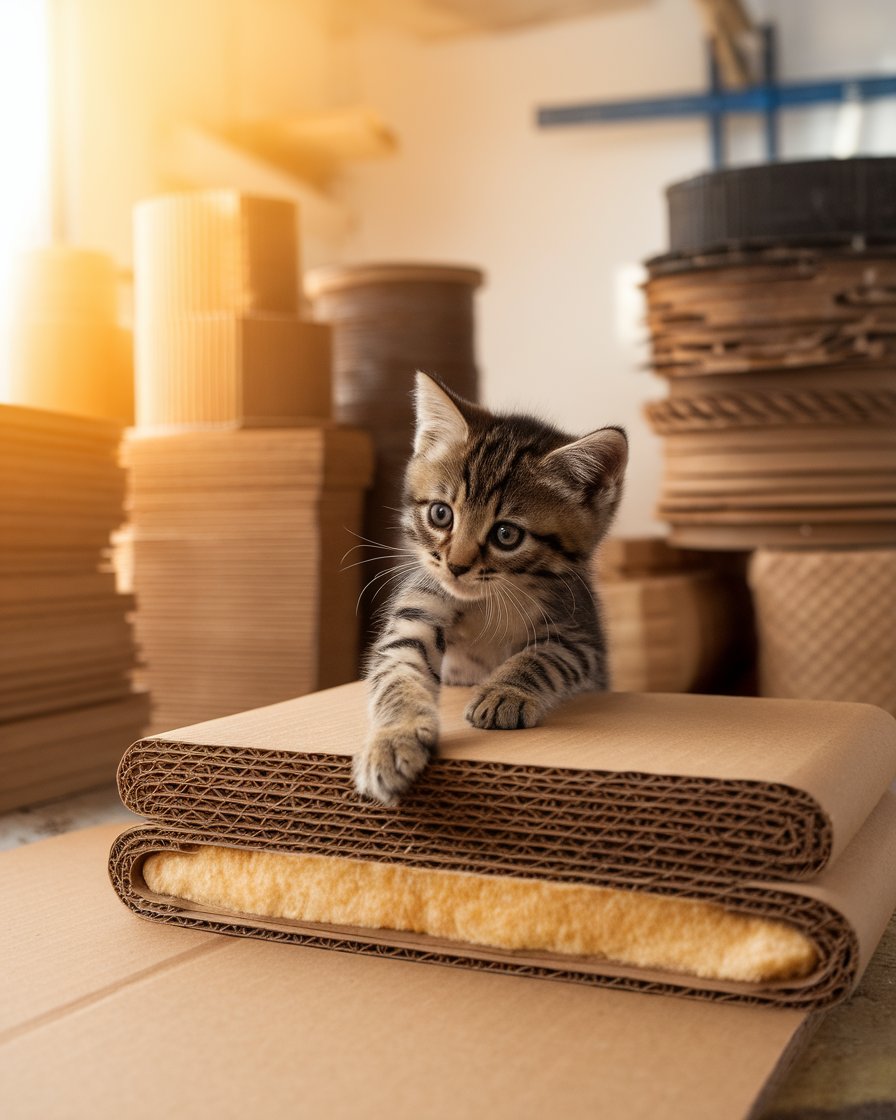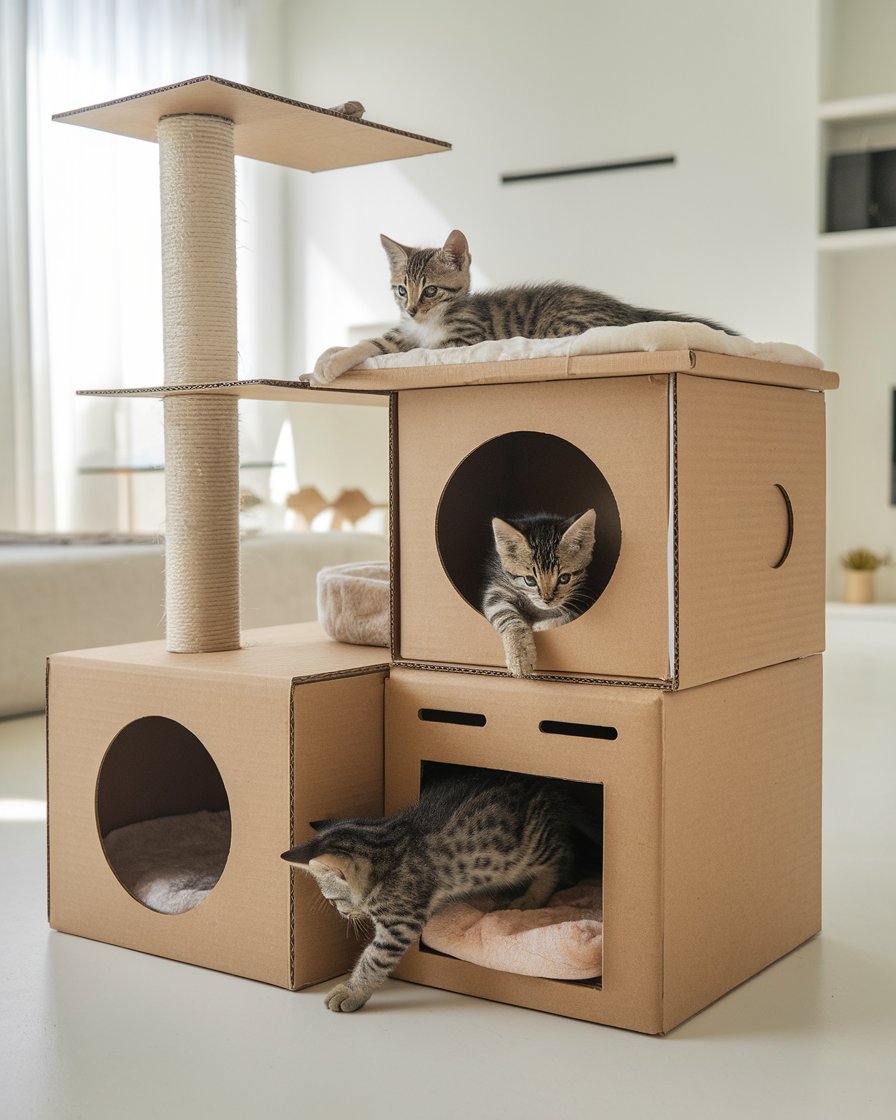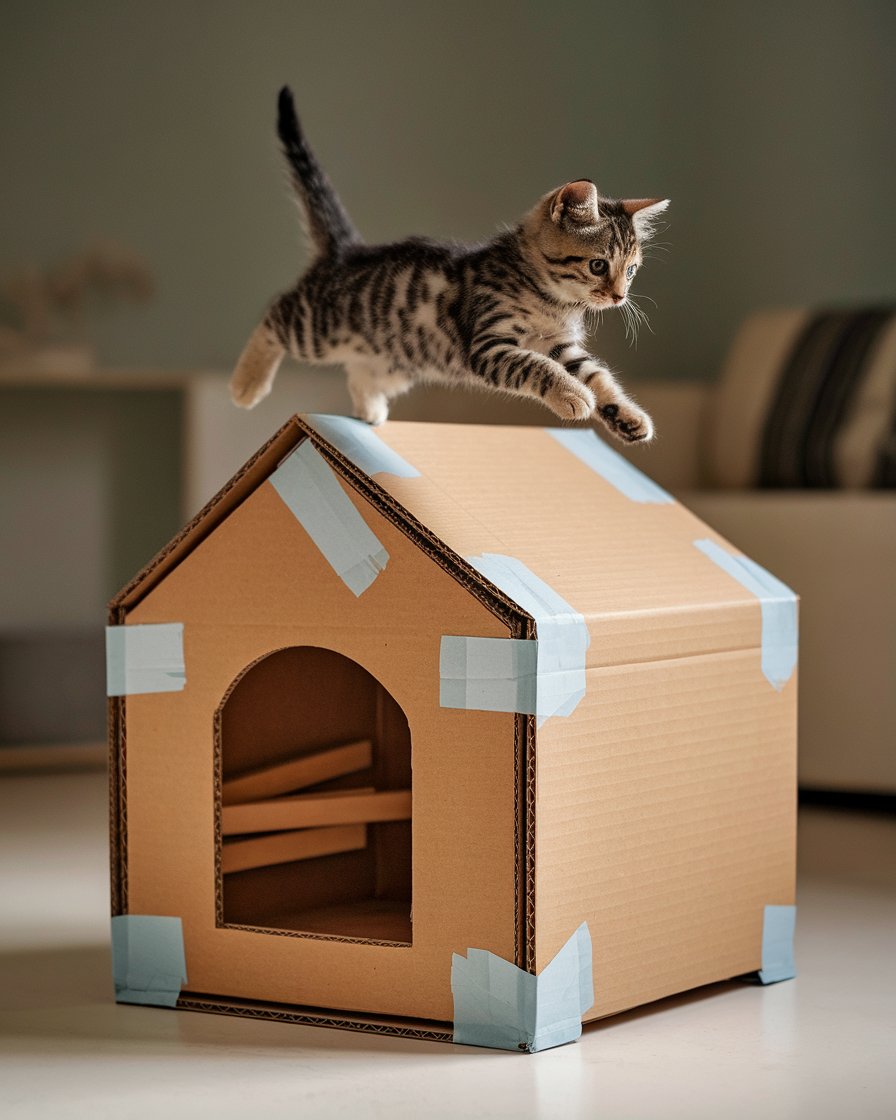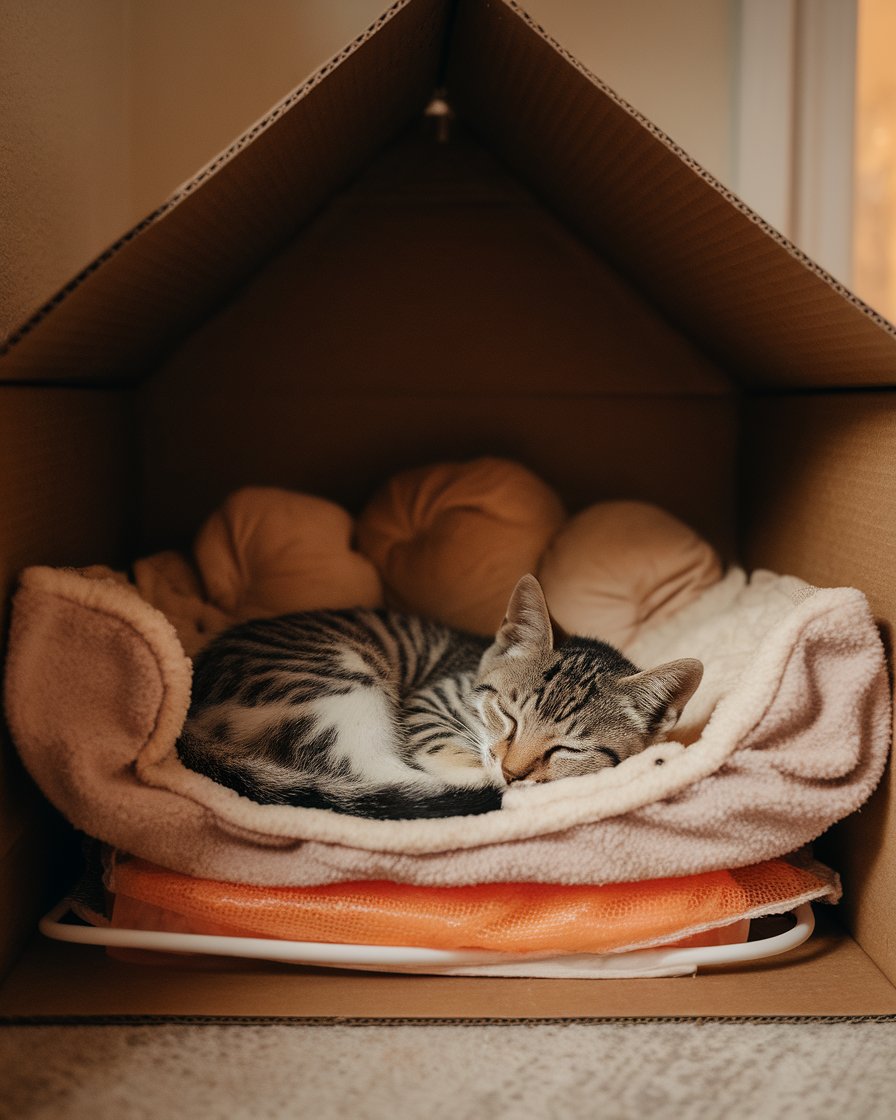- Eye Infection Treatment Helps Prevent Pink Eye
- Relief Allergies Symptoms, Runny, Dry Eyes
- Safe for Small Animals (Eye Drops)
Introduction
When building a cat house, choosing the right indoor materials is key to creating a cozy hideaway that your feline friend will love. Cats naturally gravitate toward spaces where they feel comfortable and secure, and adding elements like soft blankets or cushions can help create the perfect atmosphere. It’s important to select materials with a suitable texture that are both durable and safe, ensuring the house remains long-lasting. Whether your cat likes to play or curl up and nap, the right design can transform any spot into a relaxing place for them to enjoy.
For many cats, having a designated space is not just about comfort but also about privacy. A well-placed litter box and cozy cozy cat space allow your cat to feel secure and relaxed. Adding features like a scratching pad or cat nip toy can further enrich their environment and encourage interactive play, making the cat house not only a fun retreat but also a safe, nurturing home.
Key Takeaways
Choose durable and safe materials like double-walled or corrugated cardboard for your cat house to ensure stability and insulation.
Correctly measure the height, width, and entrance size of the cardboard to provide your cat with a comfortable and accessible space.
Incorporate multi-level platforms and scratching areas into the design to match your kitten’s playful instincts.
Reinforce your cat house by layering cardboard and securing weak spots with tape or glue for improved durability.
Add soft bedding and warmth, like fleece blankets or a low-wattage heating pad, to create a cozy and inviting space for your kitten.
Ensure easy accessibility by designing cat-friendly entrances with rounded edges and flaps, allowing your kitten to explore comfortably.
Choosing the Right Cardboard

When building a cat house, the type of cardboard you select is essential for ensuring comfort and durability. Not all cardboard is created equal, and choosing the right one will determine how long-lasting and sturdy the structure will be. Whether you have a playful kitten or a large cat, making the right choice ensures your cat’s safety and comfort within their new cozy hideaway.
Types of Cardboard Suitable for Cat Houses
When selecting cardboard for a cat house, it’s important to consider strength and interaction. Double-walled cardboard offers excellent insulation and stability, making it perfect for creating a cat condo. Corrugated cardboard, known for its scratch-resistant texture, is ideal for providing your kitten or adult cat with both comfort and entertainment. If you’re looking for an eco-friendly option, recycled cardboard is a great choice that is both safe and sustainable.
Measuring and Sizing the Cardboard
Measuring your cardboard carefully is key to creating a comfortable space that fits your cat perfectly. Ensure that the house is tall enough for your cat to stand comfortably, and leave plenty of room for them to turn and stretch. The entrance should be easy for your cat owner to access, and a spacious doorway allows your cat to come and go freely. Using the formula: Height of the cat’s shoulder + 2 inches, you can provide the best space for your kitty to explore.
Designing the Cat House

As a new cat parent, designing a cat house that matches your kitten’s personality and your preferences can be a fun and creative experience. The goal is to create an inviting, comfortable space that encourages your cat to explore and relax. By choosing the right layout and personal touches, you can turn any corner of your home into the perfect place for your feline friend to unwind and play.
Key Elements for Designing a Cozy and Secure Cardboard Cat House
Material Selection
Choosing the right type of cardboard is crucial. Double-walled cardboard offers durability and insulation, making it perfect for building a stable cat house. If you’re environmentally conscious, consider using recycled cardboard, which is both safe and sustainable.Personalized Design
Tailor the cat house to your kitten’s personality by incorporating multiple levels, cozy nooks, and scratching areas. Adding interactive elements like dangling toys or small tunnels can also make the space more engaging and fun for your kitten.Comfort and Safety
Ensure the interior is comfortable by adding soft bedding, like fleece blankets, and keeping the structure safe with rounded edges and secure joints. This will create a cozy, secure environment where your kitten can relax and play.
This list provides a well-rounded approach to creating a cardboard cat house that’s not only functional but also personalized to your pet’s needs.
Basic Designs and Layouts
When planning the basic layout of your cat house, it’s important to consider your kitten’s natural behaviors and needs. Incorporating multi-level platforms will give your kitten plenty of climbing opportunities, which they already love. Adding cozy cubby sections equipped with soft bedding will create a safe space for your cat to curl up and rest. Don’t forget to include scratching areas to help promote healthy claw care while also protecting your furniture from any scratching damage.
Adding Personal Touches
Personalizing your cat house with creative touches makes it feel like part of your home. Use colorful fabrics that suit your style to make the house visually appealing for both you and your kitten. You might also consider adding fun décor such as murals or cat-themed artwork to create a lively environment. To keep your cat entertained, try hanging interactive features like dangling toys or even small tunnels. These personal additions can foster a more enriching and enjoyable space for your cat to grow and play.
Creating a Stable Structure

When constructing a cat house, stability is key to ensuring your pet’s safety and comfort. A well-built structure will withstand the playful antics of your kitten and provide a secure retreat for years to come. By reinforcing the materials and making thoughtful design choices, you can create the perfect place where your cat feels safe and relaxed.
Reinforcing the Cardboard
To make your cat house more durable, it’s essential to reinforce the cardboard. Start by layering multiple pieces of cardboard for the walls and floor, which will create a stronger foundation that resists tearing or sagging. Pay special attention to the corners and edges, adding extra tape or glue to these weak spots, as they tend to give way under pressure. You can also include lightweight supports, such as thin wooden strips or cardboard inserts, to help distribute your cat’s weight evenly and prevent structural collapse when they leap or play.
Tips for Making It Durable
Durability doesn’t have to be complicated, and a few simple steps can go a long way in preserving your cat house. If you plan to place the house outdoors, weatherproof it by using a waterproof cover or spraying the cardboard with a protective layer. It’s also smart to position the house in a stable area where there’s little chance of it being knocked over by heavy foot traffic or other hazards. Finally, be sure to inspect the cat house regularly for any signs of wear, repairing any damage early to maintain its integrity.
Making it Cozy

Creating a cozy space for your kitten goes beyond simply providing a shelter; it’s about making them feel secure, warm, and comfortable. Cats, especially young ones, thrive in environments where they can relax and feel at ease. Designing the perfect place for your cat involves adding soft textures and maintaining warmth, ensuring your kitten feels right at home.
Adding Soft Bedding
Soft bedding plays a crucial role in making your kitten’s space as comfortable as possible. A simple fleece blanket can turn any spot into a cozy retreat, while a specially designed cat bed with raised edges provides a sense of security. For a budget-friendly option, old towels can work just as well, giving your kitten a soft spot to curl up and rest. The right bedding can make all the difference, creating a welcoming area where your kitten may feel safe and relaxed.
Incorporating Warmth
In addition to soft bedding, incorporating warmth is essential for your kitten’s comfort. A low-wattage heating pad placed underneath the bedding can mimic the warmth your kitten would have felt with its mother. Alternatively, a snuggle sack can provide the same cozy, secure feeling. Make sure to place the bed in a warm, draft-free corner of the house, as this adds an extra layer of comfort and prevents your kitten from getting too cold. Positioning the bed off the floor in a quiet space will also help them feel more secure.
A home with a happy pet is the best place for love and care, as these two go together perfectly.” – Stockbossup Pet Care Blog (You have a great investment strategy)
Adding Entrances and Exits
When building a cat house, ensuring that your feline has easy access to entrances and exits is key. Cats are naturally curious and love to explore their surroundings, so a well-designed entrance will allow them to move in and out freely. By creating a space where your cat feels safe and confident, you help foster an environment of security and playful exploration.
Importance of Accessibility
Accessibility is a major factor in making your cat house feel like the perfect place for your pet. A well-placed entrance allows your cat to come and go easily, helping them feel in control of their space. Providing multiple exits can also make your cat feel more comfortable, as they have quick routes to escape if they feel anxious or need to retreat. Easy access to exits encourages healthy playtime and allows them to burn off energy while feeling safe.
Designing Cat-Friendly Openings
Designing cat-friendly openings involves creating entrances that cater to your cat’s needs without being intimidating. Entrances should be large enough for your cat to move through easily but not so big that it feels too open. Rounded or archway designs are great for adding a welcoming touch, and you can even use flaps or curtains for a soft and comfy entrance. Avoid sharp edges to ensure your cat stays safe while exploring, and make sure the openings are easy to clean and maintain over time.
Conclusion
Creating the ideal cat house ensures that your furry friend has a safe and cozy retreat they will enjoy for the last several years. When you introduce your kitten to this space, it’s important to focus on comfort, accessibility, and a design that your cats love. Incorporating elements like soft bedding, sturdy materials, and enriching toys can transform the area into the perfect spot for your cat to relax and explore.
Whether you have an indoor cat or a more playful kitten, this space should serve as a haven that reflects your cat’s natural instincts. From using high-quality materials to adding fun features like scratching posts or a cat tree, you’ll be giving your pet a stylish yet functional home. Ultimately, a well-thought-out cat house will enhance their daily life and strengthen the bond between you and your pet.

James Dunnington leads the James Dunnington Collection, featuring five unique blogs: a practical Pet Care Guide, an enlightening Ancient History Blog, a resourceful Home Improvement Guide, a cutting-edge Tech Innovation Guide, and a strategic Online Money Making platform. Each site delivers valuable insights designed to empower and inform. For updates and more tips, visit our Contact Us page to sign up for our newsletter, ensuring you never miss out on the latest content from any of these dynamic fields.
